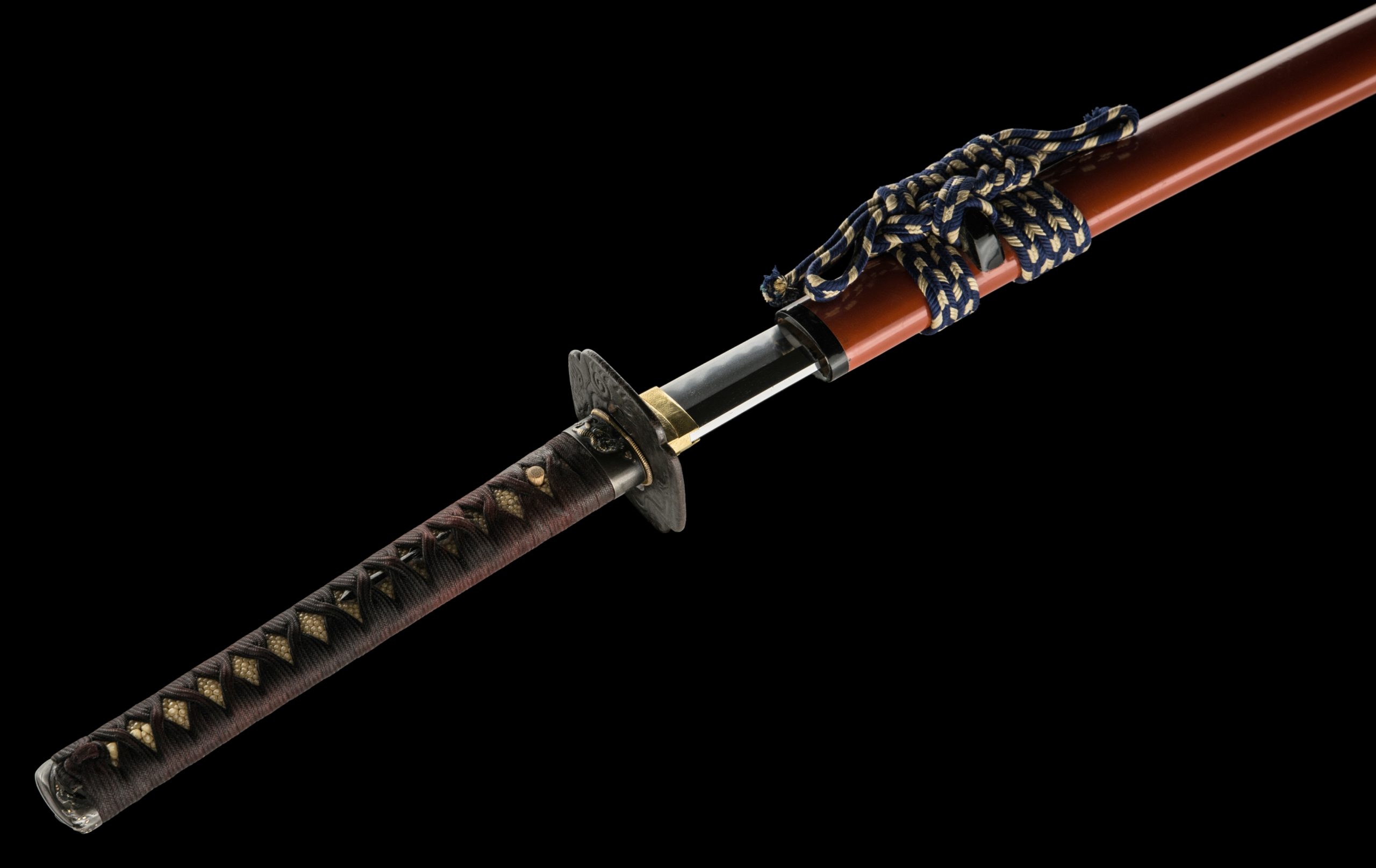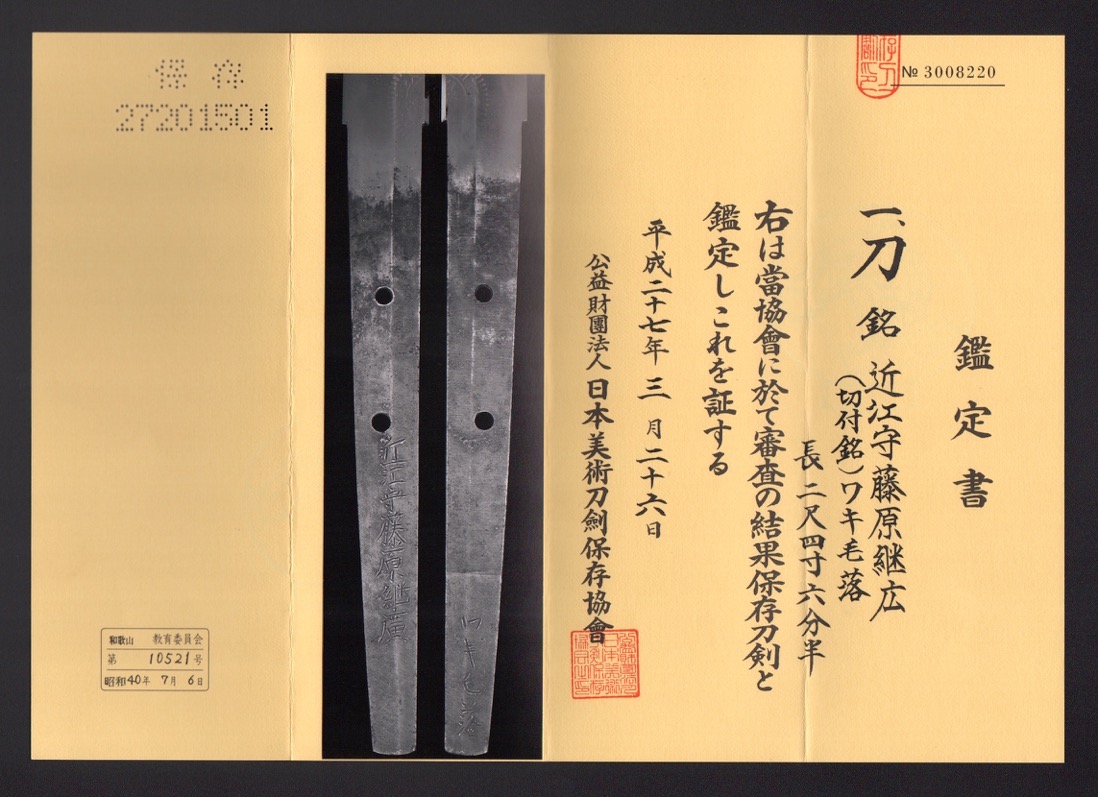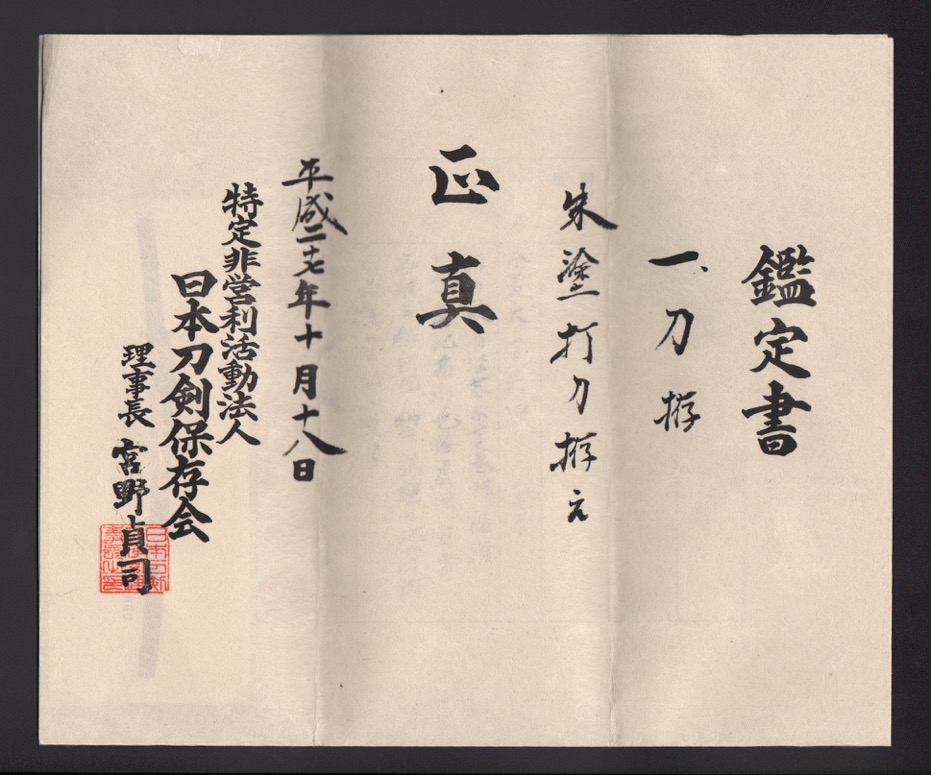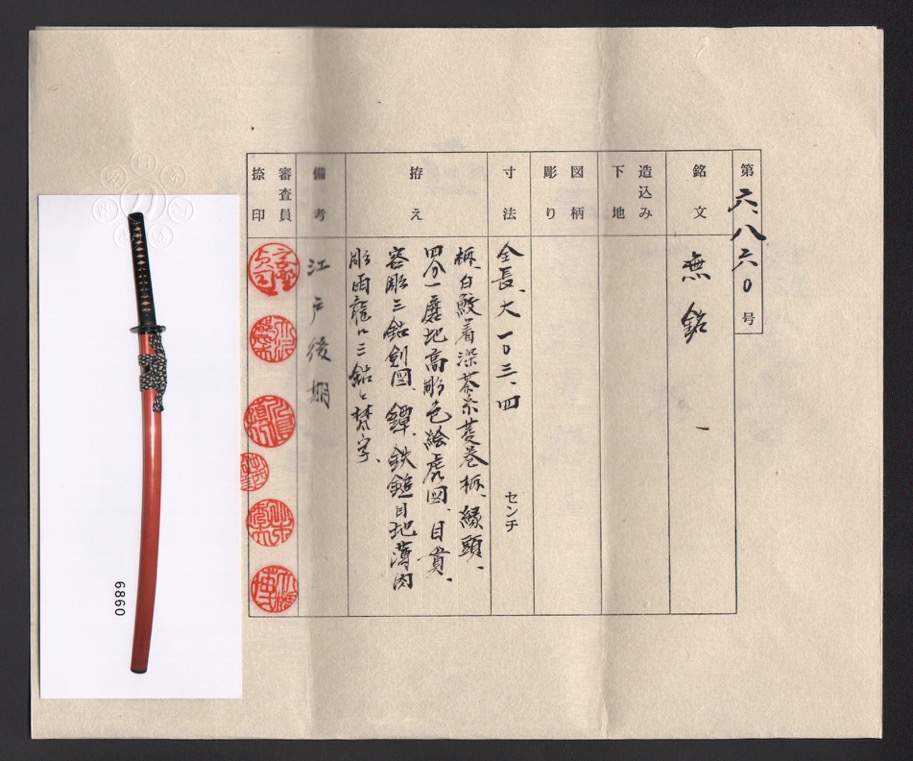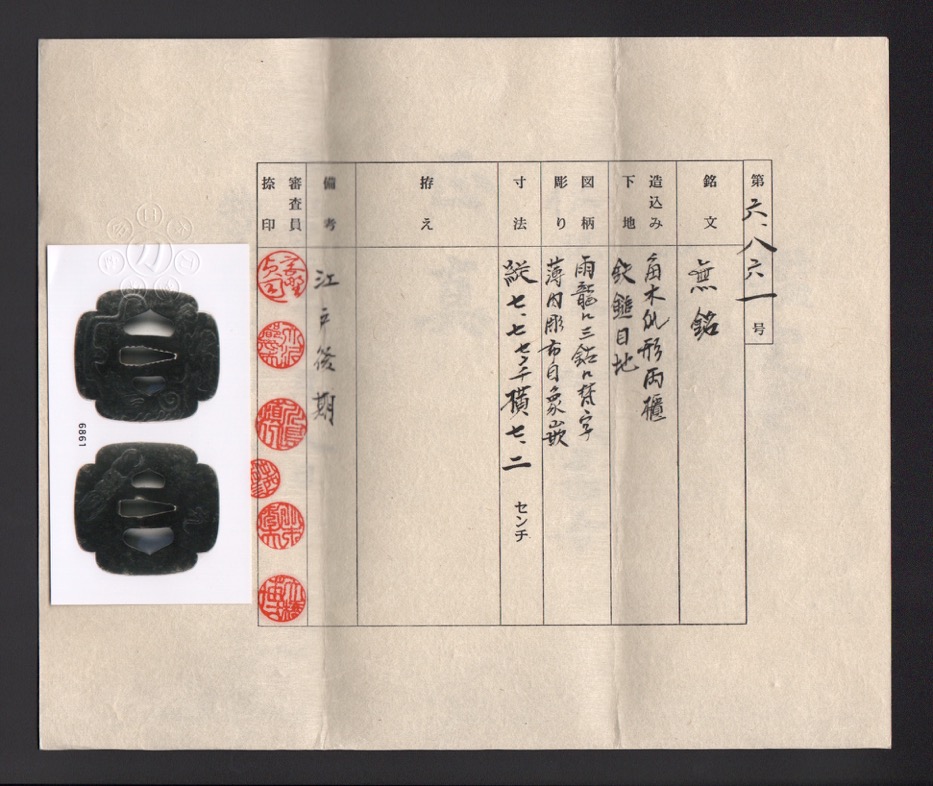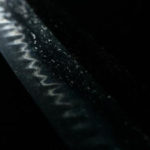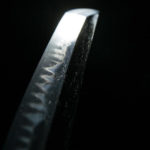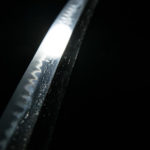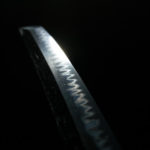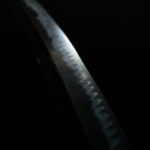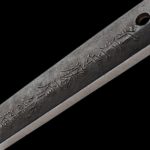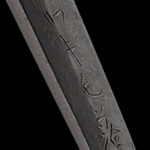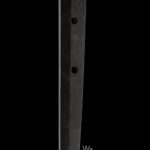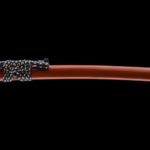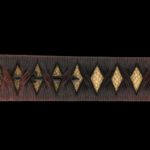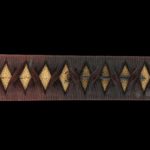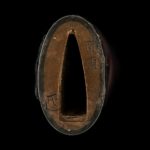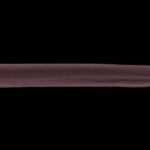Gallery Page (Display Only)
Description
A TSUGUHIRO KATANA (with cutting test)
signed, edo period (kanbun era: 1661-1673)
NBTHK Hozon & NTHK-NPO Certificates
Swordsmith: Omi no Kami Tsuguhiro / Wakige Otoshi (cutting test)
Location: Echizen province (Fukui prefecture)
Length: 74.5cm Curvature: 1.4cm
Jihada: Ko-itame
Hamon: Gunome midare, sophisticated ashi in hachu with konie and sunagashi
Nakago: Machiokurii-nakago
Certificate #1: NBTHK Hozon (a sword Worthy of Conservation by the Society for the Preservation of the Japan Art Sword)
Certificate #2,3: NTHK-NPO Kanteisho (a sword’s koshirae and tsuba designated as Important by the Society for the Preservation of the Japanese Sword)
Included: Koshirae, Shirasaya, carry bags
This formidable katana by Wazamono swordsmith (maker of sharp swords) Omi no Kami Tsuguhiro has tameshigiri (a certified test cut) whereby the sword severed through a cross- section of a human body at the armpit level.
This particular cutting test is called wakige otoshi. The sword’s cutting edge is substantially long at 74.5cm with a curvature of 1.4cm. It was, in fact, approximately 79cm, the distance between the two holes on the nakago). This shortening process is called machi-okuri whereby only the cutting edge is adjusted, not the length of the sword itself. It was done as matter of fighting practicality for the Samurai.
The hamon (temper line) is classic Tsuguhiro – a wavy semi-circular gunome midare that is bright and full of life. There is plentiful nie crystals with sunagashi. It’s a joy to examine.
The katana is fitted in a wonderful, proper Edo-period koshirae. This is a set of fittings that have remained in tact since the mid-1800s. It gives the feeling of a time warp back to the feudal days of the Samurai shogunate. We learned via a judge at the NTHK-NPO that only very skilled swordsmen under patronage of Feudal lords could have a red saya. Skilled Samurai only!
The fuchi-kashira is of silver depicting a tiger and bamboo. A tiger represents spiritual force to confront life’s challenges and the bamboo signifies the necessary flexibility one needs to possess in order to find life balance.
The iron tsuba (guard) carries the design of a dragon with a bonji symbol and the vajra thunderbolt, matching the brilliant sankozuka menuki that guards the tsuka (hilt).
There is a saying in the Japanese Samurai culture that only special and sharp swords are carried inside a red scabbard.
The blade has been certified with NBTHK Hozon Token and NTHK-NPO Kanteisho for both the koshirae and tsuba.
Certificate
Translation:
Hozon
No. 3008220
Certificate of Designation
One, Katana
Mei (signature)
Omi no Kami Fujiwara Tsuguhiro (Kiritsuke Mei) Wakige Otoshi
2 Shaku 4 Sun 6 Bu (74.5 cm)
After examination, we hereby announce that the Katana has been awarded
Hozon Token (A sword worthy of conservation)
Issued in 27th year of Heisei (2015), March 26th
Nihon Bijutsu Token Hozon Kyokai (The Society for the Preservation of the Japan Art Sword)
Translation
Translation:
Issue No: 6860
Certificate of Designation
One, Katana Koshirae
Aka (Red) Nuri Uchi Katana Koshirae
Shoshin (authentic)
Issued in 27th year of Heisei (2015), October 18th
The Nihon Token Hozon Kai (NTHK-NPO)
The Non-Profit Japanese Sword Appraisal Association Chairman of the Board, Teiji Miyano
Back Page:
Mumei (unsigned)
Sunpo (length):
103.4 cm
Koshirae (sword fittings):
Tsuka (hilt): Shirasame Gi Fuka-cha Ito Hishi Maki Tsuka
White ray skin wrapped base traditionally weaved with dark brown silk
Fuchi kashira (collar/pommel): Shibuichi Suriji Takabori Shikei Tora Zu Shibuichi polished, high relief engraving, and tiger design
Menuki (decorative grips): Katachi Bori Sanko Ken Zu
High relief engraving and Sanko sword design
Tsuba (guard): Tetsu Zui Mokuji Usu Niku Bori U-ryu ni Sanko to Bonji
Dragon/rain/bonji/sankozuka design
Note: Crafted during late Edo period (1780-1867).
Translation
Translation:
Issue No: 6861
Certificate of Designation
One, Tsuba
Den Higo, Koudai Jingo
Shoshin (authentic)
Issued in 27th year of Heisei (2015), October 18th
The Nihon Token Hozon Kai (NTHK-NPO)
The Non-Profit Japanese Sword Appraisal Association Chairman of the Board, Teiji Miyano
Back Page:
Mumei (unsigned)
Tsukurikomi (style of forging): Kaku Boke Gata Ryo
Square Japanese quince shape and two holes for kogai and kozuka
Shitaji (material): Tetsu-zui Moku Ji
Hammered pattern base
Zugara (design): U-Ryu ni Sanko ni Bonji
Dragon/rain/bonji/sankozuka design
Hori (engraving): Usu Niku Bori Nuno Me Zogan
Thin high relief engraving and cloth pattern inlay
Sunpo (measurement): Length: 7.7cm, Width: 7.2cm
Note: Crafted during late Edo period. (1780-1867)
Gallery
This Sword is not available for purchase.
If you wish to purchase a Japanese Sword please view our Nihonto for sale page or contact us directly via email or contact us at 1(608) 315-0083 any time, please include specifics of what you seek, i.e.: Katana, maker, era, price range etc.
Pictures and content may not be copied without the express permission of samuraisword.com ©

